Avoiding the worst impacts of climate change will require throttling back on fossil fuels. While many electric utilities in the Northwest are beginning to understand that clean, renewable power is their only possible future, the gas utility sector is taking a different tack with a new pipe dream: renewable natural gas (RNG). These utilities aim to position RNG as the answer to decarbonization. It’s an answer that would allow them to continue to grow their customer base, lock in profits from new infrastructure investment, and green up their image. Unfortunately, their RNG strategy rests on faulty assumptions and fuzzy math, plus a bit of deception. In the next article in this series, we’ll explore some of the deceptive tactics utilities are deploying. But first we’ll dive into the fundamentals of RNG.
What is RNG, and where does it come from?
RNG is methane gas, which is chemically identical to fossil natural gas but sourced from decaying feedstocks. Nearly all available RNG is siphoned off landfills, sewage treatment plants, or livestock manure ponds on large industrial farms. These places are rich sources of RNG because when animal waste and trash decay, the microbes that break them down produce gases that contain methane, which can, in turn, be captured, cleaned up, and pumped into a pipeline. Today, many waste facilities already capture their methane gas and use it on-site to generate heat or electricity. Farms also sometimes capture the gas for on-site heat and power, though it is more common for them to release the gas from manure ponds into the air, where it becomes a greenhouse gas in the earth’s atmosphere.
Another flavor of RNG is synthetically manufactured, from either inciting chemical reactions between molecules of water and carbon dioxide or thermal gasification of biomass like crop residues or debris from logging operations. Synthetically produced RNG is still in the early stages of commercialization, as developers have completed only a handful of demonstration projects, and a few larger-scale plants in the European Union are online or in construction.
RNG’s Four Fatal Flaws
On the surface, RNG seems like a promising solution, one with enviable branding: it’s both renewable and natural! But a closer look reveals that RNG is hardly a panacea.
On the surface, RNG seems like a promising solution, one with enviable branding: it’s both renewable and natural! But a closer look reveals that RNG is hardly a panacea.

RNG may play a niche role for a few select purposes, but large-scale RNG deployment would not allow us to maintain business as usual while decarbonizing. RNG has four fatal flaws: availability, cost, carbon intensity, and industry obfuscation.
Fatal flaw 1: Availability
There simply isn’t enough RNG to replace our current consumption of natural gas—not even close. In 2019, gas usage in Idaho, Oregon, and Washington totaled 710 million of the 27 billion BTUs of gas consumed throughout the United States. These quantities far outstrip even the rosiest projections for RNG development. Industry-influenced studies by ICF estimate that RNG could fill in as much as 16 percent of current gas usage nationwide, if all sources were developed. Unfortunately that’s only about half of what’s currently used by the hard-to-decarbonize industrial sector, which accounts for 30 percent of the nation’s gas consumption. (In Cascadia, industry uses a somewhat smaller proportion of the total amount of gas used: 32 percent in Idaho, 24 percent in Washington, and 20 percent in Oregon.) To the extent that any RNG is commercially available, it should probably be reserved for industries that cannot easily replace gas with electricity and have no other cost-effective alternatives for decarbonizing. In fact, studies by Energy Transitions Commission and Rocky Mountain Institute suggest that using RNG for residential or commercial purposes would be misallocating a “precious” resource because these sectors can be transitioned to clean, all-electric power relatively easily.
Fatal flaw 2: Cost
RNG is very expensive relative to other energy sources. Today, a million BTUs (MMBTU) of natural gas costs $3.67. According to a 2019 study prepared for the American Gas Foundation, about 44 percent of prospective RNG projects can be developed at a cost of $7 to $20 per MMBTU, with a median cost of approximately $18. The remaining 56 percent of potential projects exceed $20 per MMBTU. Many of the lowest-cost RNG projects (those developed from waste streams that are large, centrally contained, and conveniently located near existing pipelines) have for the most part already been developed. What remains are the costlier projects: smaller facilities farther away from pipelines, and biomass that is dispersed and therefore costly to gather and process. Even if we were to replace fossil gas with RNG and continued to use combustion appliances, they would cost a mint to operate. Monthly bills could easily increase fivefold. It would not take too many months of sky-high bills to justify replacing gas equipment with efficient electric alternatives.
Fatal flaw 3: Carbon intensity
RNG has a big carbon footprint. All told, the emissions from natural gas account for nearly a quarter of greenhouse gas emissions nationwide. A clean fuel it is not. RNG is chemically identical to conventional natural gas, which means that it, too, is largely composed of greenhouse gases. It travels through the same leaky distribution pipelines as conventional natural gas, sending small amounts of super-warming methane into the atmosphere. And when RNG is burned in our appliances, it produces the same exact amount of carbon that conventional natural gas does.
The emissions savings from RNG, such as they are, come from preventing the release of the “renewable” methane from decaying feedstock sources like landfills, sewage, and manure lagoons. Yet alternatives to generating this methane in the first place abound, and there is a risk that commercializing RNG could actually increase its environmental impacts. According to a report by California Climate and Agriculture Network, a profitable market for manure-based RNG likely increases localized pollution by reinforcing industrial livestock farming practices that result in liquid-based manure storage and crowded feedlots. If farms pasture-raised their livestock, they could avoid generating much of the methane to begin with. Similarly, diverting landfill-bound waste to recyclers or composting facilities or simply curtailing sources of trash could significantly decrease methane production in landfills.
In all fairness, a full accounting of the emissions from substituting RNG for conventional natural gas or diesel shows that it results in a net decrease. In fact, all told, emissions from RNG are likely to be 55 to 60 percent of conventional natural gas when it is sourced from a landfill or sewage treatment plant, as is most common. Therefore, it may make sense to substitute RNG for natural gas where a net-zero carbon solution doesn’t exist (as is the case for some industrial processes), but from a decarbonization perspective, it does not make sense to use RNG where gas could be simply replaced with net-carbon zero electricity.
Fatal flaw 4: Industry obfuscation
The gas industry is using RNG to greenwash its image while obscuring its real objective: growth at climate’s expense. By marketing RNG as a “renewable” solution to greenhouse gas emissions, the gas industry is drumming up excitement for a product it cannot deliver. The industry aims to create the illusion that our gas system can be decarbonized by introducing a new fuel that can offset today’s gas demand, when in reality, it would offset only a small portion of that demand. If the public buys the pitch, it will enable gas companies to invest millions more dollars into new infrastructure that would lock in decades of profits. The result would be consumers paying higher prices for a façade of greenhouse gas reductions.
The tall tales about RNG don’t stand up to scrutiny. Although there may be some modest climate benefit for a few niche applications like heavy industry, RNG cannot be a replacement for the way we use natural gas now. There isn’t enough of it, it’s too expensive, and it’s bad for the climate. Worse yet, it lets the industry get away with spinning yarns that will benefit gas company’s bottom lines at everyone’s expense. In a follow-up piece, we’ll take a closer look at the tactics Cascadia’s gas industry is using to weave these pipe dreams.

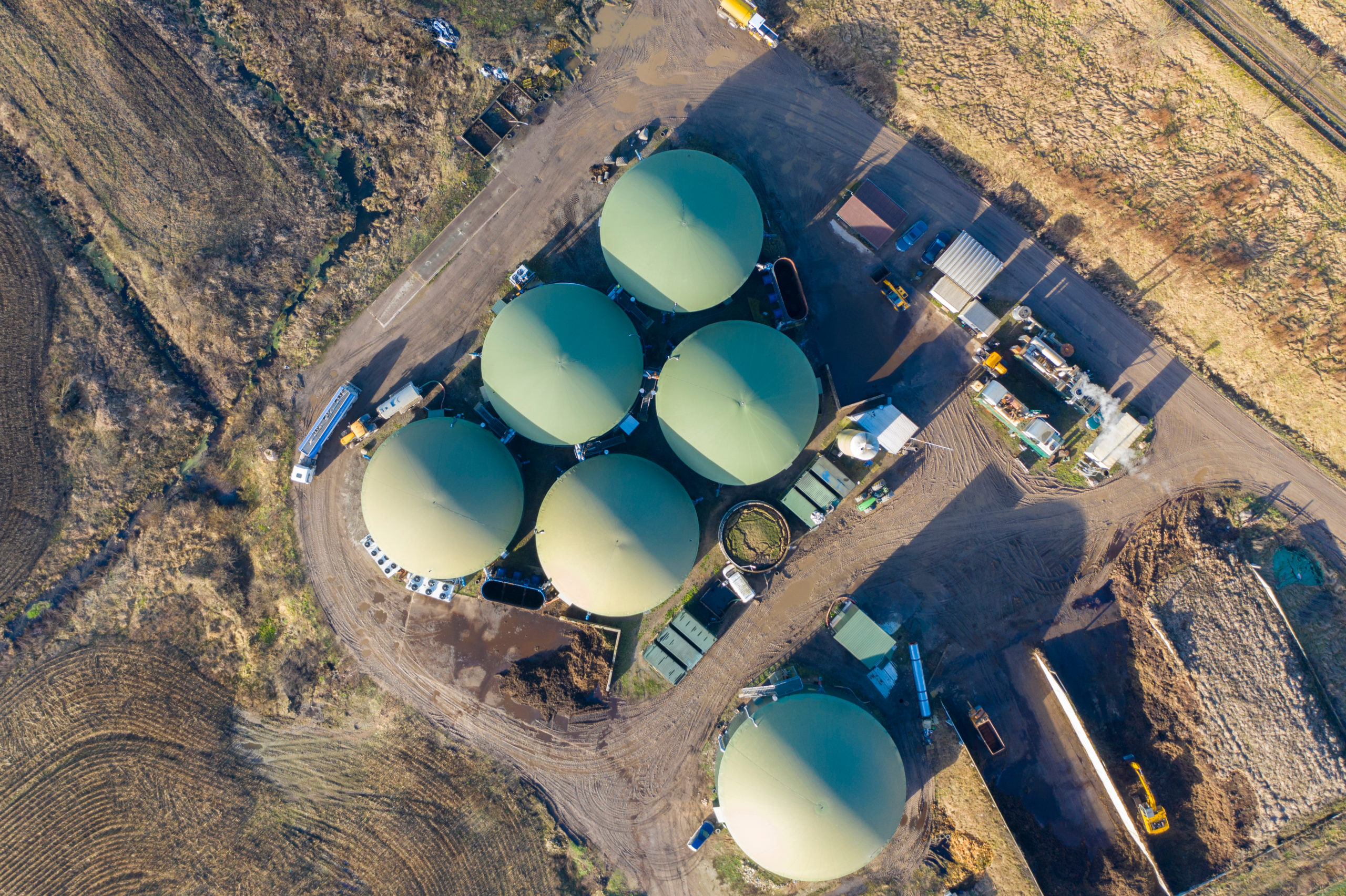
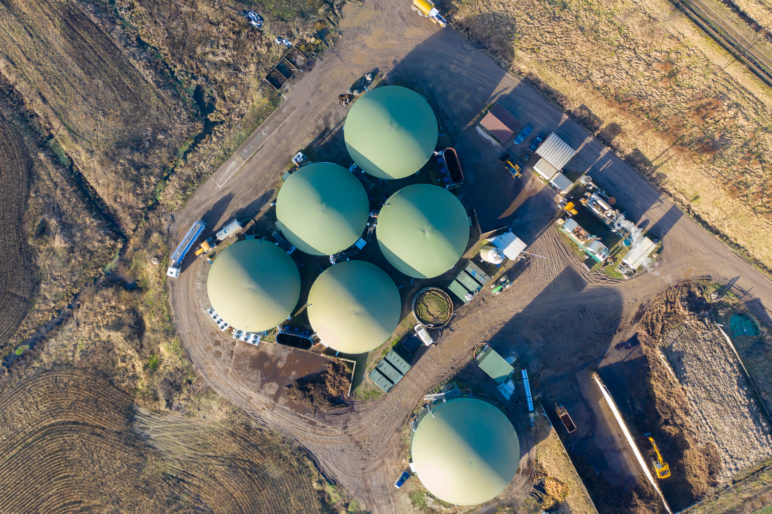




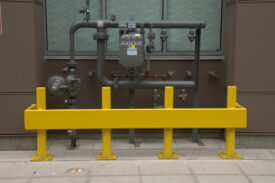
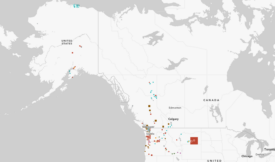
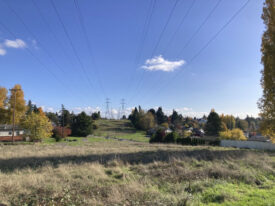
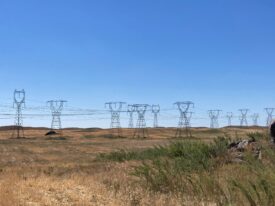

Eric Redman
No one claims RNG is a panacea — that’s just a straw man that’s easy for you to knock down. If our objective is to replace fossil natural gas, then three things (at least) are needed: electrification, RNG, and some add’l fuel, probably Hydrogen, that’s carbon-free (but also not yet available at scale). There is not enough of any of these three, including electricity, to replace fossil natural gas in the US — just to replace NG heating/cooking loads with electricity wd require a doubling of total installed US generating capacity, which is not going to happen. Meanwhile, as you note, all the carbon in RNG feedstocks will end up in the atmosphere one way or another (unless geologically sequestered). The RNG should therefore be used to displace fossil NG at the burner tip, molecule for molecule — not flared as raw biogas, e.g., but used for industry, transportation, etc. And BTW although there can never be enough RNG to replace fossil NG by itself, there is much more RNG possible than ppl usually think, because woody biomass is rarely used today for RNG or liquid biofuels. But it should and will be. Please don’t confuse the actual if non-panacea virtues of RNG with the tactics of gas utilities that you dislike; the same type of confusion set back carbon capture & sequestration for at least a decade, and we can’t get that lost time back. The renewable natural gas itself is not a falsehood — it’s real. And within its limited but not trivial admittedly non-panacea sphere, it is a definite climate benefit.
Phil B.
Great primer! I worry about RNG infrastructure & incentives being used for fracked gas support down the road. We’ve seen this sort of thing before.
Ethan Seltzer
There is no such thing as “renewable” natural gas. There is “recovered” natural gas, or “(re)processed” natural gas, or “nonfracked” natural gas, but if we keep calling it “renewable” we only play into the hands of those who want to distract our attention from the need to decarbonize our energy sources generally. This is a useful primer but it would be refreshing to add a fifth point calling attention to the fallacy of using “renewable” anywhere close to “natural gas”. Thanks!
Eric de Place
Ethan, that’s an important point and I’m glad you raised it. We’ll try to address that in our next installment on RNG. An awful lot of the debate over RNG is cast in distorted terms that are designed to advantage the industry.
Mr. Rafe Sunshine
I understand that Ballard Industries of Vancouver is proposing using their fuel cell technology for hydrogen power for freight/ passenger trains and cargo shipping. Can CH4 (methane) be split into C and H4, the hydrogen being used for propulsion in these polluting/ increased carbon emission forms of transportation?
Zane Gustafson
Yes, methane can be used to produce hydrogen, although the chemistry a more complex than simply splitting the methane molecule. And yes, hydrogen can be used as a transportation fuel for Fuel Cell Electric Vehicles.
Laura Feinstein
The vision is that hydrogen will be produced via electrolysis from water (H2O). There is another process beyond that to make synthetic methane (CH4) by combining the hydrogen from water with CO2 from some sequestration source. These processes are both pretty electricity-intensive and are pretty immature technology-wise. But, in a few years, we’ll probably see more of both. The economy is still going to need some alternative fuels to augment clean electricity for things such as aviation and heavy-duty transportation as you mentioned.
Patricia Page
I was struck by this article’s parallels in the Cost and Availability sections to the tactically delaying arguments made against solar and wind power in earlier days. And buried within the article was the “good news” which should have led: that reclaimed (rather than renewable) gas is an improvement over fossil-derived gas where gas is required. The facts are the same, but one approach is oppositional and the other midwifes cooperation in a Best Use scenario. I take encouragement from the notion that change will come more quickly if we cooperate, collaborate rather than oppose whenever we can see our way to do that.
Eric de Place
I think there are some key differences relative to the delay arguments that were used against solar and wind. Among them, RNG is only projected to get more expensive the more it is deployed (because the low-cost stuff is already captured and/or there isn’t much of it). More importantly, hoping for RNG runs the very meaningful risk of incenting another round of capital investment in gas distribution infrastructure that could well prolong the fossil fuel economy. Wind and solar are exactly the opposite.
Jay Mirro
The flaws make a lot of sense. However, I am worried that the Author did no really stress the importance of harvesting methane for Livestock facilities. The methane generated is a serious GHG and something needs to be done with it. Large livestock and leaking landfills are no going anywhere so something needs to be done that methane.
Eric de Place
Jay, we agree that capturing methane from those facilities makes sense. But we should also be careful not to provide them with a financial incentive because, after all, we don’t want to make industrial scale livestock facilities and landfills more profitable. The key point we’re trying to make is that RNG cannot serve as a replacement for fossil gas — there isn’t enough of it and it’s too expensive — and it shouldn’t be used as an excuse to slow decarbonization. And it shouldn’t be used as an excuse not to decommission gas infrastructure.
Jan Steinman
I’d like to make an argument in favour point-of-use capture and used of methane.
If farmers capture methane from farm activities, and use that methane for heating and cooking, what harm is done?
I agree that setting up an entire new industry that will ship materials from afar to make methane that goes into pipes and shipped to afar is A Bad Thing™.
But surely, there is no harm done in capturing methane that would otherwise go into the atmosphere, and using it on-site?
T M
“If farms pasture-raised their livestock, they could avoid generating much of the methane to begin with.”
False. Manure dropped in a field will generate methane and CO2 just as it does in an anaerobic digester. But it won’t be collected and used purposefully.
Most attempts to reduce greenhouse gases are foolhardy; this one makes the most sense of all. The flaw is that the taxpayers of California are paying for it through LCFS. But they voted in this nonsense, so companies are flocking to produce RNG.
Laura Feinstein
I’m not a poop expert but the folks at CalCAN deal in this shit (sorry!) and they say, in the reference cited in the article above (Page 8), that dry manure systems can reduce methane emissions by more than 90 percent. The CalCAN article references an academic study by some researchers from UC Berkeley that made this finding.
You are correct that most of the RNG being produced is being used for transportation fuel, driven by the low-carbon fuel standards in California and elsewhere. It seems off to me too that polluters are being bolstered financially for their pollution–a perverse incentive. Someday hopefully, we’ll be able to force the polluters to internalize the cost of their pollution, rather than profit from it.
Paul Gehl
The article is baloney laced with partial truth. 16% of our power supply is significant especially when the infrastructure is already in place and functioning flawlessly. RNG is 300% cleaner than EVs certified by the EPA and CARB. UPS, Amazon Republic, NYC metropolitan transportation and sanitation, LA metro and many more have converted to RNG. Waste Management currently generates electric to power 6 million homes from RNG 24/7/365 reliably for base load power. Coal is still where a very large portion of our electricity comes from. Australia is the poster child of what not to do converting to wind and solar and one step out of the Stone Age by nearly destroying their grid with wind and solar along with Texas and Hawaii. The savings are tremendous converting our refuse and manure to gold with RNG digesters reduced tipping fees pay for most projects. The City of Phoenix digester generates $479 million a year of RNG at current prices. Hydrogen is a pipe dream it takes more energy to make than it delivers with no natural source. Leakage is also a problem with the smallest molecule in the universe.
Eric de Place
Paul, I don’t even know where to begin with your comment. RNG isn’t 16% of our power supply and can’t ever be, especially not if one doesn’t want to buy 5x more for energy. The infrastructure that is already in place is not functioning flawless; it’s a hot mess of climate-warming methane leaks and occasional explosions. And I don’t even know where to begin with your remarks about Australia, Texas, and Hawaii, which seem to be simply mistaken.
As we note in the article, there are some niche applications for RNG that are worthwhile: namely, industrial applications that cannot otherwise be decarbonized by clean electricity. We should reserve our limited supply of low-cost RNG for those uses and focus on genuinely zero-carbon energy sources for everything else.
Jeff
You are obviously on the electric industry’s payroll. No “truly” green advocate of a negative carbon footprint would strive to diminish the advantage of RNG as much as you do. I know B.S. when I hear it. I suggest you engage yourself in further education.
Eric de Place
Jeff, we are most assuredly not on the electric industry’s payroll. Do you have any specific objection to what we wrote or just ranting?
Mike
This is the same sort of comment that used to plague articles that dared to criticize “clean coal”. Turns out those articles were 100% correct, and that like RNG, that technology was neither financially viable nor scalable but rather a blatant greenwashing attempt. There seem to be countless people that want to buy anything the fossil fuel industry sells them, regardless of how many times they are misled. I guess the fossil fuel industry’s investments into the same marketing firms used by the tobacco industry are paying off.
Jeff
You forgot to inform the reader of the primary fossil fuel that electric companies use to create their electricity. Let’s delve in to that huge issue shall we???
Chris
This article makes more sense if we were all vegan, had zero landfills, and our sources of electricity were all clean.
Then we wouldn’t need AD (anaerobic digestion) to address our waste issue.
Solar and wind have their own carbon intensity associated with manufacture and shipping. Although renewable, these technologies are not carbon negative.
Did you look at Bloom Energy?
Bloom
They use RNG to charge fuel cells, without combustion. They provide a constant power source at scale.
I feel that the arguments against RNG argue against basic human needs for cheap meat and landfills. At least this industry acknowledges that won’t change anytime soon.
We will always have sewage sludge, animal manure, food waste, and woody biomass. The ways we have handled that in the past is problematic and has created mistrust.
AD is not intended to be the only way of generating energy, but an elegant way of dealing with existing issues – smelly landfills and feedlots.
Eric de Place
Chris,
I’m not sure where you get the idea that our critique is somehow utopian. It centers on two basic facts: 1) there’s not nearly enough RNG available to replace all of our current fossil gas use, so it should be reserved for hard-to-decarbonize applications; and 2) we’re already using all the cheap and easily available RNG; increasing our use of it will/would be very expensive, driving up costs on consumers when there are ready made alternatives that are much cheaper and carbon free.
Chris K
Eric, thanks for your reply.
I agree that the industry has become very engineered and expensive.
I see large scale AD as a way of handling waste first. The generating of gas is secondary in my mind. My aunt had a pig farm and the manure lagoon smelled awful. By containing the waste and capping it, the smell was down significantly. Capturing the gas became an added benefit. It didn’t offset all their gas needs, but that wasn’t the point.
Isn’t that what happened after capping old landfills (to avoid the smells)? They punched holes in the cap and flared the gas?
There are examples of AD done on the cheap, albeit at a smaller scale. In China and India, a building or group of houses share in feeding a large digester. The resultant gas can be used right on site. This has been done for hundreds of years without all the over engineering that we see now.
I believe that going to a micro scale is a way to provide for cooking gas and organic fertilizer.
One question, what forms of electricity generation is net zero today? I’m not sure of one. Solar panels and windmills require manufacture and shipping, hydro requires lots of water and dams, nuclear has perception issues, etc. I’m honestly asking, not to be a jerk.
I shudder when I hear suggestions that simply going to electric is the better way to go. (“ it does not make sense to use RNG where gas could be simply replaced with net-carbon zero electricity.”)
I live in Ohio, we still have coal plants being subsidized by ratepayers. My local grid is carbon intensive, and dirty.
Thanks for your thoughtful article.
Jeff Winkler, Portland
I learned quite a lot from this article and your patient responses to the comments. Thank you.
Keller I
Why wouldn’t this article focus on the even harder-to-decarbonize transportation sector? Natural gas is not used in cars at scale, yet. Petroleum is, though. Petroleum is likely close to 2x (or higher) more emissions intensive than ‘Renewable’ Natural Gas. With benefit of 2022 hindsight, given the supply chain crisis and higher costs of metals like Lithium and Copper, integral to the energy transition, could the article be updated to reflect the increased costs of electrification, for instance? And why is the industrial sector so difficult to decarb? It’s actually not. Focusing on the US entirely, about 90% of coal emissions are generated to create electricity – so your Tesla, in Chicago, runs on more coal than anything else in the first place. It’s a confusing space and I think the biggest argument against RNG is the scale.
Tim
When did NG become some evil source of energy? We should be accelerating its use to support our energy needs. Despite all this talk of how dirty it is, it is the cleanest form of domestic energy we have. If you think all our infrastructure is full of leaks you are mistaken, a leak is lost revenue. We do not want to follow Europe/Asias failure of expecting wind and solar to support our energy needs. They have undone our two decades of clean energy transition with NG in the past 12 months, because without NG they have gone back to coal. This talk of full electrification for the US will destroy everything. Clean NG power plants are stable sources of energy, very small amounts of emissions and when combined with heat recovery are 80-90% efficient. Wind and solar are only 30-40%, unstable, more distributable to our natural landscape and would stop the economy once consumers find out the true cost of being fully electric. 2022 is already showing the public how expensive electricity can become when demand is high. Maybe you should write an article preparing the public for the trillions of dollars they will be paying to triple the size of the current electric grid in the US. I would also like to see a study on the true carbon footprint of all these land clearing exercises to place solar panels and the loss of natural Co2 sequestration, the environmental impact created by the manufacturing of solar panels, they are unable to be remanufactured or repurposed at end of life. Then discuss the power storage needs required for wind and solar. How many trillions of tons of earth will need to be mined to produce these large scale battery storage systems that are required to maintain the grid stability if relying on solar or wind. Demonizing a very clean fuel will be a catastrophe. You need to look at the whole picture, globally if you plan to control the environment, not just the fine States mentioned in your article.
Laura Feinstein
Hi Tim,
Sorry for the tardy reply but natural gas is by no means clean. When you consider the climate pollution that occurs from methane leaks from fracking all the way through delivery and combustion, gas racks up at least as much emissions as coal and diesel. There are many folks that just want to count combustion emissions from gas but doing that only tells part of the story. See this analysis
You are correct that wind and solar are intermittent but there is a ton of work and research going into figuring out how to store energy for those dark, windless days. And, don’t forget that wind and solar aren’t the only gigs in town when it comes to renewable electricity. As I discussed in the article, RNG isn’t so clean–not when compared to renewable electricity. And, yes, I believe we should be putting the waste methane captured from landfills and the like to beneficial use, but let’s focus this limited resource toward industries that cannot electrify or operate with cleaner alternatives. For heating homes and businesses however, RNG doesn’t make sense.
Marvin Blubaugh
Sorry, RNG (methane) is not chemically identical to Natural Gas. Natural Gas is primarily methane, but it also contains ethane, propane and other flammable gases which increase its energy content. Methane produces 40-60% of the BTU that Natural Gas produces (depending on the study you go with and the source of the natural gas).
Jim L
according to Fortis, the gas distributor in BC (served by the same pipeline that serves the I5 Corridor) its 95% the same…
https://www.fortisbc.com/about-us/facilities-operations-and-energy-information/natural-gas-facts#:~:text=Mostly%20made%20up%20of%20methane,propane%20and%20other%20heavier%20hydrocarbons.
the idea that the remaining 5% of the constituents make up 40-60% of the heat content isn’t based in mathematics…
All natural gas in North America is similar in composition, the higher ends you reference are stripped out of the gas stream before being deemed pipeline quality natural gas because they are more valuable and the oil and gas industry loves a profit…
https://en.wikipedia.org/wiki/Natural-gas_processing
professional engineer with 35 years in the ng industry…
Rafael Sanchez-Cohen
Hello,
Whoever said RNG would replace NG has no idea of the energy market. RNG is just another player/supplier in the market. I don’t see this as a flaw. You could’ve presented this idea in a way that this is another player and that to make it sustainable in the long run, this supplier will need a whole supporting infrastructure that will range from policies to the market. Otherwise, the chances of this supplier surviving in the market are few.
Carbon intensity and carbon footprint are different concepts from the idea you developed in this part. To discuss carbon intensity or footprint, you need to define the battery limits of the system and perform a life cycle analysis. You were referring to the emissions created by using this product (downstream), while carbon footprint refers to the carbon emissions involved in obtaining that product (upstream). CO2 produced to obtain that product vs. CO2 produced by this product.
The gas industry is not using the RNG to greenwash their face. The RNG is greenwashing everyone’s face that has access to the RINs credit market. Everybody is using the RINs.
Producing RNG is costly, so an incentive called RIN exists to make it profitable and enable the construction of this infrastructure. Introducing a new supplier to the energy market without an incentive is like thinking that water is going to flow from the subsoil to the surface without a pump.
Whoever thinks a new player in the energy market, in whatever format, doesn’t need a multifactorial incentive platform when a well-established O&G industry is in place just… Good luck.